There are no trans kids, only kids confused about sex
The unscientific beliefs at the heart of the transgender movement must not be ignored by journalists, clinicians, and trans allies
1. Natural Kinds versus Non-Natural Kinds
The two sexes, male and female, are what philosophers call natural kinds. The concepts of man and woman correspond to groupings of people “that reflect the structure of the natural world rather than the interests and actions of human beings,” to use the Stanford Encyclopedia of Philosophy’s definition. Men and women are fundamental, objectively distinct, universal classifications of humans — they transcend cultures and generations. So naturally, the sexes are an essential aspect of human life. We’re primates, with all the deeply ingrained instincts that apehood entails, including sexual instincts.
But we’re also highly cerebral, and humans’ uniquely complex minds are preoccupied most of the time with abstract concepts and ideas. So in addition to natural kinds, we also organize ourselves into groupings called non-natural kinds, such as religious affiliations, social classes and castes, and especially among young people, subcultural tribes like goth, punk, and emo. These are subjective, human-created categories that reflect our social and cultural ideas about the world rather than any intrinsic, biological distinctions. Goths are certainly real and they exist — I used to be one — but they are not an innate, universal, natural category of people the way, say, women are. Without reference to the cultural context within which the goth subculture exists — prevailing conventions about clothing & presentation, behaviour, and beliefs — there is no way to define who is a goth and who isn’t one. The same holds true for, say, Catholics or Buddhists or liberals or conservatives or Brahmins or Dalits. They are all social constructs — ideas we uphold and share in our collective minds. Females and males as groups don’t have that problem defining themselves. If some day extraterrestrials come across our fossils long after our species has gone extinct, they will have no trouble distinguishing male from female human skeletons, without any need to decipher our long-gone cultural mores.1

However, the demarcation between natural kinds and non-natural kinds isn’t always cut and dried. We live in two jumbled and overlapping realms simultaneously — the hardware of the natural world and the software of collective ideas that operate on it — and this sometimes leads to confusion and disagreement among the populace about which groupings arise naturally — from our hardware — and which exist primarily as concepts in our minds.
Take sexual orientation, for example. Scientific evidence shows that gay and straight, like the sexes male and female, are natural kinds. They have a material, biologically hard-wired basis that is observable independently of self-reports or social contexts, consistent across cultures and history. About two percent of all people are born gay — with innate sexual instincts that are exclusively or nearly-exclusively focused on members of the same sex — and that number doesn’t change no matter which country or which century you’re looking at. But there’s a sociocultural layer which complicates society’s understanding of sexuality: our physical and physiological sexual instincts are sometimes stifled by social conventions. Some homosexuals live in the closet, and no doubt some individuals who identify as gay or straight could, from a biological perspective, be more accurately described as bisexual — or vice versa.2 This has led to an absence of agreement in the popular cultural narrative about whether gay, straight, and bi should be understood as social constructs — choices we make, influenced by our upbringing, our social environment, and our values — or as fixed, natural categories in their own right. Same-sex attracted people like me, a gay man, have achieved broad acceptance across Western society, but all the same, we continue to occupy a somewhat hazy, indeterminate space with respect to the question of what exactly makes us who we are.
Confusion in the popular culture about homosexuals’ nature-versus-nurture origins has lingered for so long (despite the fact that scientifically, sexual orientation is well-established as an inborn, natural trait), it’s created an opening for the blatantly man-made, culture-bound social construct of transgender to slip in alongside gays and lesbians. The trans movement has seized the opportunity to model itself as a copy of ours, and its adherents falsely assert that transgender, too, is a natural kind — a fundamental, hard-wired aspect of human nature that has been historically obscured and imprisoned by social conventions, in the same way that homosexuality has proven to be. The trans activists, in emulation of the gay liberation movement of the 1970s & 1980s, argue that their movement only superficially looks like a mere cultural phenomenon to those who haven’t yet come to understand it more profoundly.
In fact, today’s trans activists are trying to claim that their “gender identities” are more fundamental, natural classifications of the human species than sexual orientations or even the two biological sexes are.
On this basis, they are demanding that society completely discard the universal, biological meanings of the words man and woman, and give them over to the activists’ socially-constructed “gender identities” instead.3
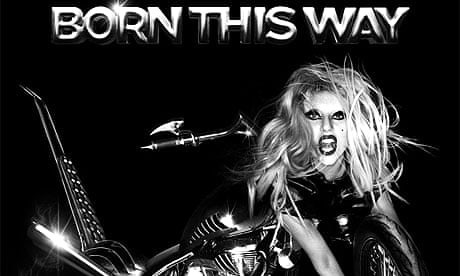
Extremists within the trans movement — I call them transgender fundamentalists or just gender fundamentalists — are not only seeking to replace the biological underpinnings of sex with their “gender identity” model, they’re also misappropriating and swapping out the conceptual underpinnings of homosexuality for transgender: they wrongly claim that homosexuality is a mere social construct — supposedly not “invented” until the word came about in the 1800s, despite widespread evidence of homosexuals’ presence and consistent characteristics throughout history. And they simultaneously insist that the opposite is true with respect to trans: they claim that when the term “transgender” came into broad cultural usage via social media, it revealed a natural category of people who have always been present, but who have up until now been inexplicably unaccounted-for throughout history.
If true, this would be a radical, civilization-upending discovery — that since the dawn of humankind none of us has ever known one another’s true sex; we’ve only been interacting with each other’s “gender identities” this whole time — or at least, we should have been, if our oppressive culture hadn’t inhibited them. If it’s not true, then the transgender fundamentalist movement is headed for an iceberg: it will soon go down as one of the biggest cultural disasters in history.
All evidence points to the latter case.
No one has ever dug up any credible historical evidence to back the transgender argument without watering down the definition of “trans” until it just means a scattering of sex-stereotype-defying people or crossdressers or homosexuals — and I guarantee you, they never will. There is no documented culture on Earth apart from modern transgender extremism that has ever attempted to impose a wholesale ban on its populace from recognizing one another’s biological sex whenever their stated “gender identity” contradicts it. Gender benders have always existed — masculine-presenting women and feminine-presenting men — and sometimes they have been culturally respected (though, alas, usually not), but they have never been taken literally to be the opposite sex, or anything close to it. They are sometimes allocated to special social categories, so-called “third genders,” such as the “ladyboys” of Thailand and the fa’afafine of Samoa, but these groups are simply gay males, interpreted socially and spiritually as something like, “not quite men but certainly not women either” within their indigenous cultures. The fact that they are male is never in question.4 On rare occasions when a few people — invariably women — pretended to actually be the opposite sex, it had more to do with society’s lack of respect for women’s defiance of social norms, and a need to circumvent rigid, sex-based vocational limitations — think Mulan or Yentl — than any kind of enlightened connection with their supposedly innate “gender identities.” No, the fictional characters Mulan and Yentl were not transgender, and neither were any of the real gender bending historical figures such as Joan of Arc, George Sand, or the ancient Egyptian queen Hatshepsut. They all knew full well that they were women, and they did not dispute it. They did not share some innate, essential quality that overrode or negated the fact that they were women, unless you believe that strong women who dare to defy the constricting roles that are socially imposed on them are not actually women at all. That’s extremely sexist, don’t you think?
But many people are hesitant to challenge the unfounded assertion that “trans people have existed throughout history” because they can’t get a handle on how to tackle such a grandiose statement conceptually, and they don’t know how to disentangle it from the quite correct assertion that homosexuals have existed throughout history — many of whom were forced to live in the closet. The gender fundamentalists ruthlessly enforce a taboo against discussing the LGB separately from the T for this very reason — they don’t want the buzz to catch on in the culture that LGB and T are fundamentally distinct phenomena that come from entirely different conceptual realms (biological versus cultural), because the T has nowhere near the same level of credibility on its own.5 And they systematically rewrite gay history, unilaterally declaring that the butch lesbians and feminine men of the past were “really” trans — that they must have had special secret “gender identities” which retroactively obligate us to amend their sexes — and therefore their sexual orientations as well — in the history books.
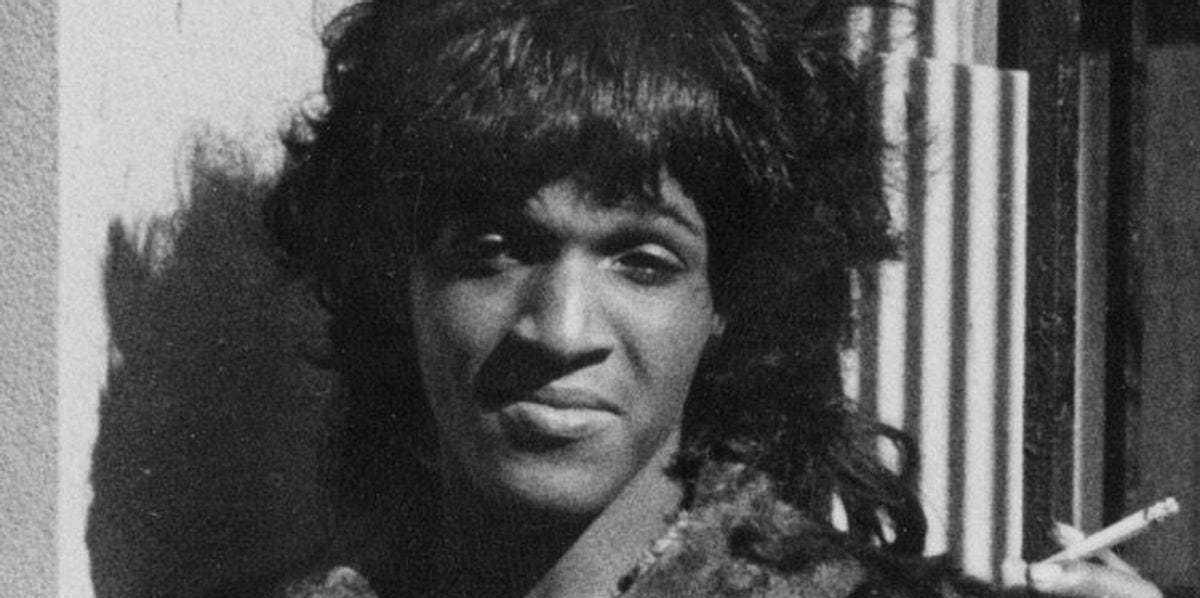
To make myself perfectly clear: the modern concept of transgender is a non-natural kind: it’s a completely idea-based, cultural concoction in the same way that goth is. Contrary to sex, which is a material fact, or sexuality, which in adults can be confirmed with lab tests such as pupillometry and phallometry, there exists no objective, material marker to distinguish “transness” from “non-transness” in individuals — and there never will be.6 Some gender benders & crossdressers choose to call themselves “trans” or perhaps “nonbinary” or some other newly invented term; others don’t. Some people who become captivated by thoughts of being the opposite sex (or neither sex) act on their thoughts by taking up transgender identities and/or pursuing cosmetic body modifications; others act on such thoughts in different ways, or not at all. Our present culture strongly encourages people to consider that they might “be” transgender, and the sales pitch tends to land among a hodgepodge of different cohorts for various reasons, including alienated or rebellious youth (much like goth or punk used to), and straight men with fetishistic transvestism. (The “gender identity” concept originated as a genteel cover story, a smokescreen to obscure the fact that the first trans people were sexually fetishistic crossdressing men seeking to upgrade their private, kinky hobby to a public, full-time gig.)
Transgender identity is entirely dependent on people’s self-reports about their feelings and the cultural context through which they’re interpreted.
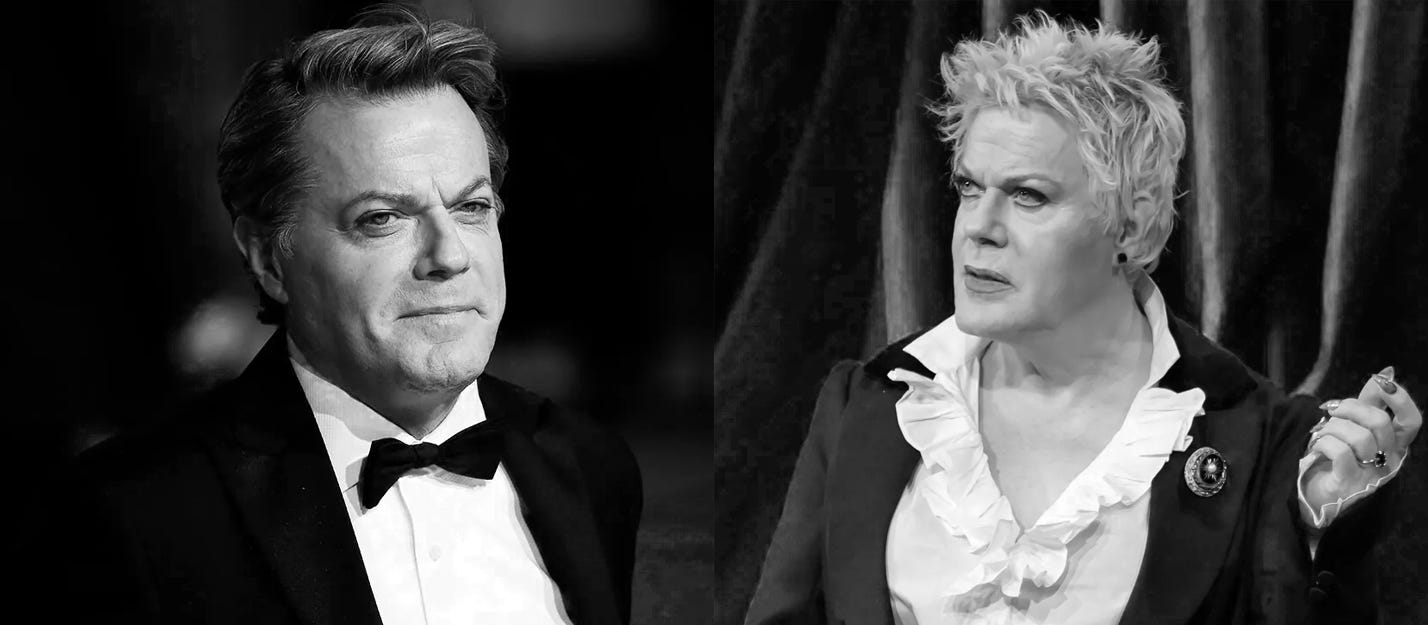
This is arguably the trans activists’ primary bone of contention with the rest of the world: the fact that male and female and homosexual and heterosexual are fundamental, natural categories of people, but trans and “cis” are… well, I wouldn’t say they’re “made up” (that wording’s maybe a bit harsh) but they’re culturally contingent social categories. Which, when you think about it, should have been completely obvious to everyone all along: they’re just identities after all, and identities are social constructs by definition.
The main objective of the gender fundamentalist movement is to flip the facts around — to force society to swallow the lie that male and female (and by extension, gay and straight) are oppressive social constructs — literally, “white supremacist colonialist” fictions — while trans and “cis” are as fundamental as the elementary particles and as universal as the laws of thermodynamics.
This is why the gender fundamentalist movement is obsessed with children.
They want to establish that transgender is a natural kind and that it’s something inherent in people from conception (again, parasitizing the gay rights movement, marketing trans as an exciting new upgrade for tired old sexual orientation). The most obvious way to do that is to single out and identify supposedly innately trans people as close to conception as possible.7 Amid the cultural upheaval and interpersonal disorientation caused by social media, many people have taken the bait. More and more, we live in a software-based world, and this is priming us to turn against our own hardware — the physical reality of our bodies. This is especially true with young people — “digital natives” — but social media has impacted all of society. The trans mania exploded when it was aggressively marketed to angst-ridden teens in the early days of Tumblr and Reddit; a tidal wave of newly “discovered” trans kids quickly followed as parents took to Facebook; now in our fully social-media saturated TikTok age, people are beginning to declare that their toddlers are trans. No doubt soon there will be newborn trans babies. (I suppose there will eventually be not-yet-born trans fetuses and embryos, too, before this terribly destructive craze runs its course.)
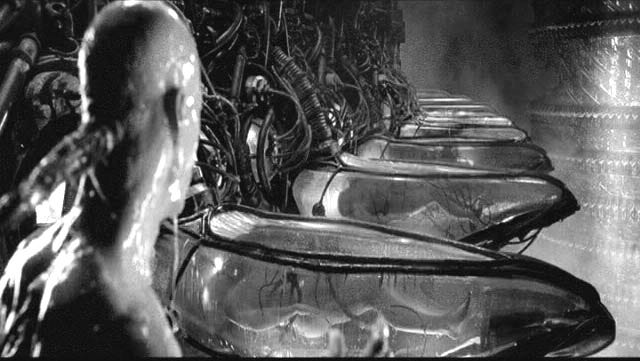
The transgender movement is different from most other socially constructed identity groups in that its fundamentalist adherents have sought to forcibly impose a restructuring of our entire society around their personal beliefs. In this sense, it’s not just an eccentric social tribe like a religious sect or a subculture that could otherwise be ignored and left alone if one disagrees with its tenets. It’s become more like a religious nationalist movement — a strange, ostensibly left-wing mimic of Christian nationalism or Islamism. In the last five years or so, trans hysteria has swept over progressive governments. Laws have been put on the books all over the world which enshrine as legal fact the fiction that “gender identities” are fundamental and innate, and which denounce the reality of biological sex as an outdated and bigoted belief — “unworthy of respect in a democratic society” as a judge notoriously put it in a since-overturned UK employment tribunal. Lawmakers have outlawed female-only spaces and banned lesbian-only events at the behest of males who claim to be women or lesbians and who hold biology-denying “gender identity” fundamentalist views. Police have arrested scores of women for publicly stating the fact that the biological sexes are salient categories which cannot be opted into or out of by the whims of people’s socially-contrived ideas and desires. In many jurisdictions, governments are intervening to promote gender identity beliefs in children, injecting transgender fundamentalism into the school curriculum right on up from kindergarten, and courts are beginning to order children removed from their homes if their parents don’t consent to subjecting their bodies to experimental medical “sex change” treatments, which by design would render them sterile and dependent on ongoing medical care for the rest of their lives.

This is all in service of the transgender fundamentalists’ mission to prove that humans were naturally meant to be primarily categorized according to everyone’s supposed “gender identity” — basically whatever we decide, like a user profile option — instead of the hard, unchangeable fact of our sex, which is fixed from the moment the very first cell that multiplies every one of us into existence — the egg — fuses with a sperm. Our sex is not a drop-down menu selection; it is infused into each and every cell of each and every one of our bodies.
The gender fundamentalists are being propped up by well-meaning but misguided progressives who have so far failed to grasp the scope of the fundamentalists’ demands and the size of their rapidly growing movement — and along with it, the devastating social consequences that will inevitably result from their futile mission to browbeat everyone until their sect’s private, mystical beliefs become universally acknowledged facts. Some liberal-minded people play along because they mistakenly believe their acceptance of everybody’s right to defy sex stereotypes in their behaviour and presentation — which is undoubtedly a good thing — necessitates a reappraisal of biological sex as a concept — which is undoubtedly unwise. They’re put off by the fact that males and females are born with inescapable, natural differences that will always matter in at least some circumstances — especially circumstances that conspicuously involve our physical bodies, such as sports, medicine, or anything to do with sexuality (dating & mating, sexual orientation, and reproduction). They have embraced gender fundamentalism as an alternative to sex realism, partly to avoid conflict with people who hold trans identities, but also out of a belief that by blurring the distinctions between the sexes they’re taking a step towards equality between them — a bogus idea that if I pretend hard enough that I can’t see who’s male and who’s female, then this will eventually rub off on everyone else and therefore inequality will decrease… or something. (Scrutinize the logic too much and you’ll realize it doesn’t even make sense.)
In reality, of course, it’s just a way to avoid addressing the societal problems of sexism and homophobia (in addition to avoiding confronting the trans activists’ delusions). The differences between males and females must be confronted and taken fully into account in order for true equality to be achieved between the sexes, and in order to understand why some people are unhappy about the sex of their bodies. We need to also acknowledge that some men’s motives for claiming to be women are rooted in their erotic attraction to female bodies, and their interest in entering women’s spaces is exploitative.
And of course gays and lesbians are shoved back into the closet if we’re not allowed to acknowledge that we exclude from our dating pools those who are not the same sex as ourselves. Straights, for that matter, are shoved into a kind of closet, too. And for that matter, people who identify as transgender are also being harmed, when the truth is withheld from them to spare their feelings: that on the dating market, everybody is only pretending that we don’t still classify trans-identifying people according to their true biological sex in the privacy of our minds — which the evidence clearly shows we all do. Our sexual orientations, being natural kinds rooted in biology, can’t be overruled at will, no matter how sexually “inclusive” we wish ourselves to be. If trans-identifying people have hopes of finding long-term partners, they need to know the truth, that their dating prospects are not going play out as though they have literally changed sex following so-called “sex change” medical operations.
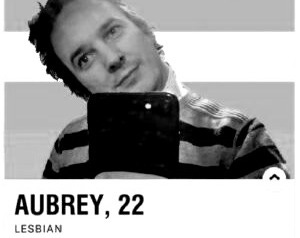
2. Folk Illness and Social Contagion
Most ordinary people don’t really believe that “gender identities” supersede sex and sexual orientation. The metaphysical beliefs that motivate the movement’s true believers in their war against biology are not shared by the majority of people who nevertheless accommodate and enable them. Everyday people who want to support their trans-identifying friends, colleagues, and family members invariably avoid thinking about the question of what exactly transgender is. Even at the medical clinics that make their millions (actually, their revenue is in the billions now) providing trans-identifying people with drastic, permanent body modifications on demand, the exact nature of their patients’ supposed “gender identities” is a question that is studiously avoided. Nor is the question ever directly addressed by the journalists and science educators who report on this area of medicine, or the judges and politicians who adjudicate and create policy around it. They all wave the question away with various excuses, and they focus instead on a much simpler framing of the issue: does it make a few unhappy people seem a little happier if we pretend? It’s easier to rationalize away the enormous damage that’s done to people’s bodily health (and the damage they’re doing to the social fabric) by focusing on the supposed benefits to their mental health, at least as it seems in the short and medium term.8
What they fail to understand is that the metaphysical question is the one that matters above all others. It's people’s quasi-religious belief that their “gender identities” are a fundamental natural kind that is making so many of them distressed about their bodies in the first place — especially young people. Legions of young people report hating their bodies because they’ve been taught that they had the misfortune of being born with a vulgar mismatch between their sexed bodies and their supposedly innate “gender identities.”
The central doctrine of the “gender identity” belief system, and the idea that is spreading like a virus through the culture, is that we as a society aren’t supposed to be noticing and reacting to each other's actual, physical biological sex, but to each other’s stated ideas about our sex instead. It’s an emperor’s-new-clothes gambit: if we can get all of society to profess belief in invisible “gender identities” it will finally make them real, and our lying eyes will be condemned for their blasphemy, having misled us all this time about the naked reality of everyone’s biology. This is of course impossible, but what’s worse: the very idea has the effect of turning vulnerable people’s minds against their own bodies. It makes them conceptualize the visible evidence of their own sex as taboo, and when they look in the mirror, every pang of recognition in this or that body characteristic, that it exposes their true biological sex to all who see it, becomes a source of shame. It turns their bodies into a psychological target that they direct their anxieties and hostilities at.
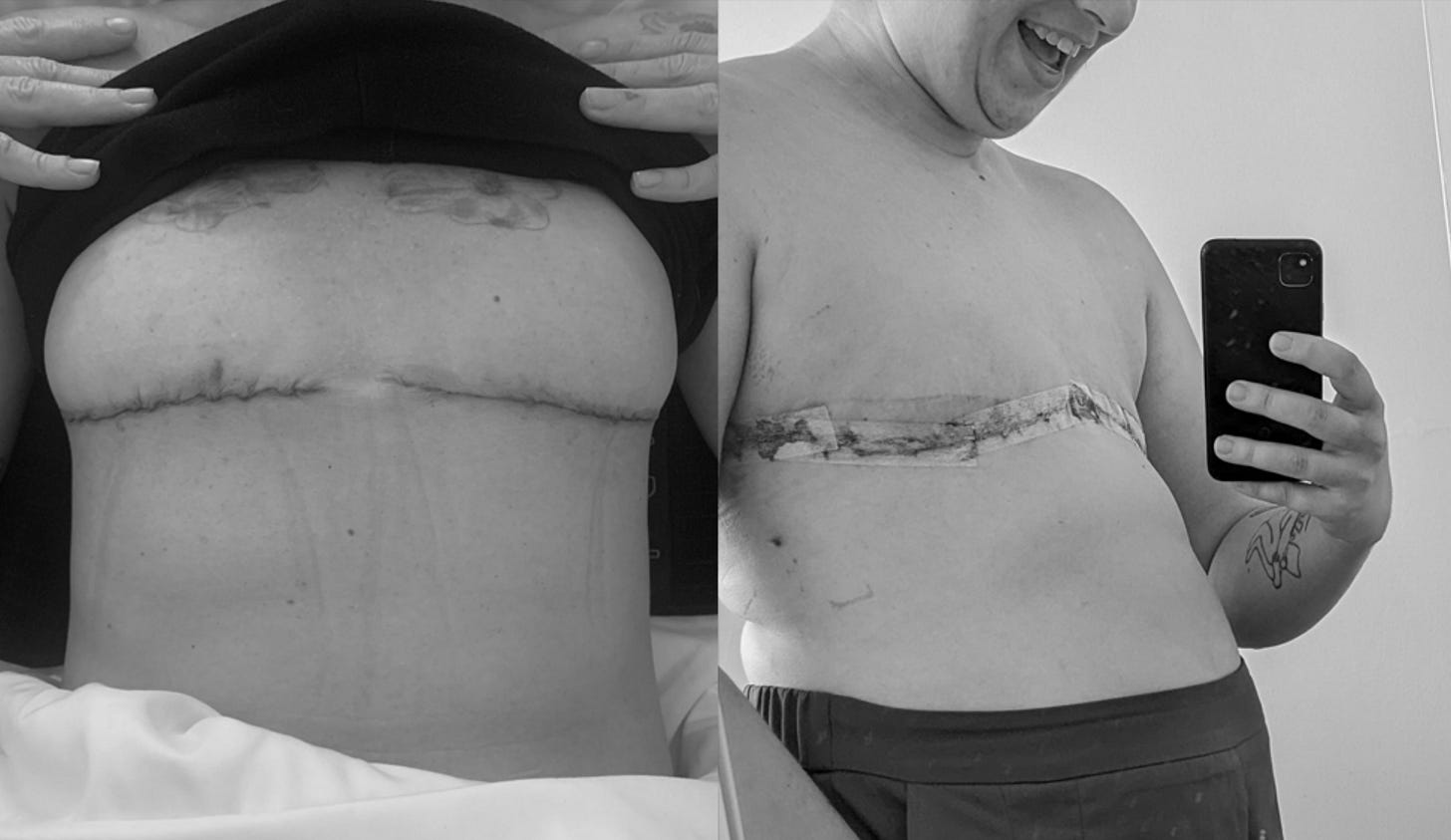
In the case of young children, it’s their parents who have begun to experience this biology-shame by proxy, and the parents are inculcating it into their children. Stereotypically feminine-acting boys and stereotypically masculine-acting girls are perfectly normal, and it’s a common phase for such children to experience some degree of confusion or distress about the concept of sex as they grow up, because their first awareness of it comes via distinguishing behavioural patterns — stereotypes — between the sexes. The deeper meanings of male and female are a lesson that comes later. As these naturally stereotype-defying kids integrate into society, they face a challenging decision: to try to fit in, or to try to take pride in having maverick personality traits that might put them at odds with traditionalists. Most kids mix elements of both as they come into their own. Children’s developing brains are evolved to handle this challenge: they’re highly neuroplastic so that they can adapt to their environment. But in kids with “gender identity” indoctrinated parents, there is no longer a process of learning how to balance self-expression with social adaptation. The child is instead given a simple answer: you are “trans”; you were born with a mismatch between the “gender” of your “identity” and the sex of your body and we are going to fix it for you. Sometimes the parents become so terrified of the prospect of their child entering into puberty, convinced that the visible emergence of their child’s secondary sex characteristics is literally a life-threatening crisis, that they seek out highly experimental and powerful “puberty blocking” drugs to stave off the natural process of their child’s body development, at the cost of permanent sterility and severe impediment to the child’s bone and brain development.
Given that the transgender subculture is based around a metaphysical belief that’s incompatible with scientific analysis — it’s impossible to construct a study to prove or disprove the conjecture, “Our biologically sexed bodies are profane and oppressive and our gendered souls are sacred and holy” — you shouldn’t be surprised to find that it’s taken on many aspects of a New Religious Movement. To the movement’s predominantly young new adherents, every act of surgically or chemically undoing or sex-swapping the visible sex characteristics of their bodies — or better yet, preventing them, in the case of pre-pubescent children — becomes a ritual baptism and a cleansing of original sin, an act of corporeal purification to achieve spiritual unification with the transgender tribe. In our unmoored and socially anxious digital age, awash with Photoshopped and FaceTuned images of impossibly perfect-looking people, the appeal of membership in a quasi-religious tribe that preaches transcendence and escape from the physical limitations of our messy, hopelessly flawed, mortal bodies is powerfully seductive, especially to boys and girls struggling with insecurities around their natural, sex-stereotype-defying personality traits, and as they move into puberty, their budding sexualities. It’s also seductive to parents who secretly harbour homophobic anxieties about their feminine sons’ and masculine daughters’ future sexualities.9

But the tenets of gender identity ideology also serve the desires of predominantly older, straight men in thrall to exotic sexual fantasies involving female role-play and sex-role swapping. Autogynephilia, the technical name for the kink of being sexually attracted to oneself “as a woman” is most likely an inborn variant of male sexuality (not unlike homosexuality in that sense), and it’s suspected to be present in about three percent of the male population.10 Autogynephiles are probably a natural kind — born that way — they’re just lying about the nature of the kind: it’s a glitch in the sex drive’s hard wiring, not a supernatural “gender identity.” The evolutionary mechanism that is supposed to keep men’s sexual targeting strictly aimed outward at females of the species (for the sake of reproduction) has a crossed wire, and it’s gone off course and turned back towards itself, like a heat-seeking missile on the fritz. (Sexologists even use a term that’s evocative of ballistics: an “erotic target location error.”) The result is that these men develop sexual and romantic fantasies about turning into women, and they usually mollify their urges in private by dressing up in women’s clothes.

This group forms the historic backbone of the transgender movement. We don’t entirely know why some men experience autogynephilia more intensely than others, but we do know that when some of these men’s private lusts are left unchecked, they can turn into full-time fixations. Some men become so driven to transform into the objects of their sexual attraction, to make their fantasies of being women come true, that they “come out” as “transgender women,” and then seek entry into female-only domains such as women’s changing areas, sports teams, and social circles — especially lesbian social circles, for obvious sexual reasons. Many of these men are so infatuated with their “female” alter egos — they have literally fallen in love and formed a pair bond with themselves — they are willfully blind to the harms caused to everyone else by their biology-denying delusions. People mistake these men’s aggressive, vehement insistence that they’re women, and the rage they express at those who deny it, as proof that they’re suffering from a grave and torturous injustice committed by society against them. While it may be true that they’re suffering from a painful sexual and romantic yearning to be female, the fact that they are male is not a social injustice. It is absolutely not society’s fault that they’re male, and there is no moral obligation for anyone to pretend that we don’t see their sex. These men are hijacking social justice activists’ bleeding hearts to selfishly indulge their fantasies at everyone else’s expense, eviscerating women’s rights, gay rights, and freedom of speech in the process.

The founding principles of gender identity ideology were conceived by these straight men as a way to rationalize their sexual paraphilias — that’s the scientific word for kinks “of marked intensity” — in order to alleviate the mental anguish they experienced as a result of them: I’m not wearing silk stockings and a satin dress because I’ve got an overwhelming sexual compulsion that I’m ashamed and embarrassed about; I’m wearing them because I’m actually a woman, and I just happen to have been born trapped inside the body of a man. So there’s nothing for me to be ashamed of. The problem is you, the people who have oppressed us with your fear and ignorance, because you don’t understand how transgender souls work.
Postmodern academics — and later, confused and vulnerable young people online — have taken literally these men’s outlandish musings about the supposedly transcendental nature of their sexual proclivities, and they have elevated the fetishistic transvestites’ folkloric beliefs about “gender identities” into religious doctrine, when previous generations at most only politely tolerated them out of courtesy.
From there, “gender identity” beliefs caught on with feminine gay men and butch lesbians struggling with mental distress surrounding their atypicality: one way to escape the bullying, abuse, and shame that can come with being a sex-stereotype-defying homosexual in a hostile environment is to try to move through the environment by stealth, camouflaging yourself as an ordinary, sex-stereotype-conforming heterosexual of the opposite sex. The “gender identity” belief system offers convenient backing for that rationale. They tell themselves they’re not evading their innate homosexuality which has caused them to stick out socially, but rather they’re embracing their natural, supposedly innate “gender identity,” and any distress they feel about being different can now be externalized as a product of society’s “transphobic” ignorance about how “gender identities” work. Thus, the burden of shame that is unfairly imposed on gender benders by society is not overcome by building resilience and self-confidence, it’s merely transferred back onto society instead. The social problem of how to integrate sex stereotype defying people into society and ensure their equality and liberty isn’t being addressed; rather, it’s being handed off and shuffled around like a hot potato, with help from “gender identity” pseudoscience.

(Straight people are all too eager to get on board with this rationale, too, because it absolves them of guilt surrounding any lingering discomfort they still have about butch dykes and femme gay guys. They’re keen to shield us poor, tragic gender benders from shame out of a sense of pity for us. I, for one, find that attitude highly insulting. If straight people didn’t treat gender bending gays and lesbians as pitiable in the first place, we wouldn’t feel such an overwhelming need to escape from our bodies and hide behind transgender identities.)
And now in the social media age, rife with anxiety, body image issues, and identity crises, these concepts have ignited the imaginations of all kinds of demographic subgroups, particularly those on the fringes of culture, encroaching like wildfires across the horizon of the cultural landscape: autistics, foster children, hipsters, YouTubers, military veterans, third-wave feminists, 4chan incels, Japanese anime fans, computer nerds, furries… and yes, goths. It’s in the zeitgeist: self-actualization by achieving healthy bodies and minds is out; self-actualization via angry pronoun demands and invasive surgeries is in.
So it’s no wonder people’s entry into the transgender subculture and their adoption of transgender identities is often accompanied by severe mental anguish — gender dysphoria, as it’s labelled in the latest iteration of the DSM, psychology’s bible. The movement was made to appease people’s mental anguish rather than to overcome it. This psychological-anguish aspect of the transgender subculture makes it unique in comparison to other socially constructed identity groups.
Although… You might half-jokingly argue that goth is a kind of appeasement of mental anguish, too: wallowing in depression and angst. And scientific research has in fact found a significant correlation between goth identification and depression as well as self-harm, although the direction of causation is still in question. Does goth identity lead to depression or does depression lead to goth identity? The scientific verdict seems to be that adopting a goth identity has a mild-to-moderate ability to cause or exacerbate symptoms of depression, anxiety, and self-harm in young people.
And yet, just like having a diagnosis of chronic depression doesn't “prove” that anyone is inherently goth, getting a psychologist to produce an “official” diagnosis of distress relating to one’s sex does not “prove” that anyone is inherently transgender.11 We recognize that goth is a subculture and that depression is a mental condition — they are two different categories of things. But the trans extremists have merged their subculture with a psychiatric medical diagnosis: to obtain a diagnosis of gender dysphoria is to gain “validation” as “truly being” transgender — it’s held as “proof” that their mystical “gender identities” are real.
And besides, the condition of gender dysphoria that underpins and supposedly validates the trans movement is, like transgender identity itself, a cultural epidemic rather than a universal phenomenon — it’s a culture-bound syndrome or folk illness — a disease which has “no known objective biochemical or structural alterations of body organs or functions, and the disease is not recognized in other cultures.” Distress about one’s sex is a byproduct of feeling ill-at-ease with the social expectations one associates with their sex — it’s a 100% social construct, like everything else to do with the transgender subculture.
And finally, like the goth subculture’s cause-and-effect relationship with depression, but with much, much more intensity, immersion in the transgender subculture is often the leading cause of patients’ mentally crippling gender dysphoria.
First, they decide that they’re trans, and then their mental health collapses because of anxiety about their “wrong” bodies, and a belief that the world is full of evil “transphobes” who are out to kill them.
The widespread conflation of transgender identity with medical need has turned it into a form of cultural iatrogenesis — the transgender subculture is causing the disease that it’s supposedly meant to cure. That’s why there weren’t any transgender people in the past: no one suffered from having supposedly been born with their “gender identity” stuck in the wrong body until transgender pseudoscience was hatched by crossdressing autogynephiles and closeted gays in the 20th Century. Those today who label children and adolescents “transgender” — including doctors and journalists — are not merely politely acknowledging their “identity,” they are contributing to their illness.
By now, these three ideas I’ve outlined have been fused together in the cultural discourse. There is now an inferred link between (1) identifying as transgender, (2) having an inborn, soul-like “gender identity,” and (3) there being a moral imperative to medically erase any sex traits in one’s body that one feels are “mismatched” with it. Transgender identity is now synonymous with a moral & spiritual right to access “sex change” medical procedures on demand. When applied to minors, its connotations are unambiguously spiritual and medical. A “trans kid” is not merely a kid who identifies as trans in the way some kids identify as goth. A “trans kid” is (supposedly) self-evidently born with the spiritual essence of the opposite sex (or neither sex), and is therefore entitled to get his or her body medically fixed, the sooner the better.
In other words, the identity label “transgender” cannot be ethically treated as separate from a medical greenlight to undergo “sex change” procedures, because that’s what it’s understood to mean by most laypeople today. Therefore there is no ethical, secular ground to concede the label “transgender” for anyone who isn’t conceivably old enough to make an informed decision to sterilize him or herself and undergo irreversible body modifications with all the inherent risks that such procedures entail. If you grant that a child or adolescent “is” transgender, it’s as good as casting your lot with the “gender identity” mystics and declaring that the child or adolescent was born innately in need of invasive medical body modifications in order for his or her “true self” to thrive.
There are no “trans kids,” there are only kids who have been taught to believe they are trans, and who may be experiencing psychological distress and being subjected to unnecessary medical procedures as a result of that belief.
3. Secular Medicine versus Ritual Therapy
A secular approach to gender-related medical treatment and transgender identity is still possible — for adults. I am personal friends with some people who identify as transgender, who have undergone medical “sex change” procedures (all as adults), and who don’t believe any of the superstitious ideas that have become endemic in transgender communities online. These people have no illusions about their biological sex, and they see their medical procedures through a pragmatic, material lens: they went into them fully aware that they’re serious, high-risk treatments designed to make them feel comfortable in their bodies, and not rites of passage into the other sex. However, I believe such best-case scenarios are rare. In the vast majority of cases of distress relating to one’s sex, physical interventions such as breast implants or reductions or removals, or the reconfiguration of male genitals to resemble a vagina, should be considered last-line medical treatments reserved for especially serious cases which don’t resolve with therapy, or they shouldn’t be conceptualized as medicine at all, but rather as elective cosmetic procedures.12
I also know people who went into their transgender medical procedures under the influence of the “gender identity” religion, believing that the procedures would magically “affirm” their true spiritual sex and seamlessly usher them into the social domain of the other sex — that they would be “born again” embodying the exalted ideas of what a man or a woman is that had transfixed them. Many of them are now disillusioned and full of deep regret and anger. They believe they were misled and exploited. One has committed suicide. Among the rest, virtually all of them say that they would not go through with the procedures if they could go back in time and choose again. It’s their plight that propels me to take action against this movement. They have been wronged, and their suffering has gone scandalously unrecognized.
This is why I believe that people who subscribe to supernatural “gender identity” beliefs are poor candidates to be approved for gender-related medical treatments. And they certainly shouldn’t be the ones in charge of assessing others in that regard.
In the past, psychiatrists carefully vetted patients before approving them for “sex change” medical procedures, and many applicants were turned down because they were acting under the influence of delusions.13 But around the beginning of the 2000s, gender mystics absorbed in their fantasies took up careers in the field and began to take over the medical clinics. Once they gained control, they instituted a new medical model of treatment based on affirming their spiritual belief in ineffable “gender identities,” which they called “gender affirming care.” The clinicians who endorsed psychiatric vetting and held onto an evidence-based, therapy-first philosophy towards sex-based distress and “sex change” treatments were cowed into silence or swiftly expelled.
The World Professional Association for Transgender Health (WPATH) became the movement’s ecclesiastical council, and its annual conferences took on the character of religious revival meetings, full of raised hands, whoops of “amen,” call-and-response chants, and endless sermons about their great satan, “transphobia.” As the conferences became more evangelical in tone, WPATH leadership closed them to the public and instituted a strict ban on allowing journalists to observe the proceedings. By 2023, WPATH had become so zealous in its mission to prove that “gender identities” are innate, natural kinds fixed at conception, it issued a new edict, recommending the removal of all age restrictions, opening up the possibility of “sex change” operations on kids of any age. (This new edict was promoted by the Biden Administration’s Assistant Secretary of Health, a 66 year old father of two who in 2011 began to identify as a transgender woman, and then quickly became a token of virtue for the Democratic political establishment.)

Such a religious takeover of a field of medicine is unprecedented, so much so that it has left many science-minded people ill-equipped to fully process what has happened. It’s rather like if Scientologists systematically took over psychiatry.
Journalists are especially misguided in their coverage of WPATH and its metaphysical conceptualization of “gender affirming care.” With regard to medical treatment for minors, they report that there’s disagreement or confusion in the field, but in fact it’s not complicated at all. The field is neatly divided into two camps: the nonbelievers and the devout.
On the one hand, there are clinicians who understand that biological sex is real and unchangeable, that gender dysphoria is a culture-bound syndrome, that transgender identity is a social contagion, and that surgeries and hormones are a high-risk, drastic treatment approach which should not be taken lightly (if at all). This group, being science-minded, are polite to a fault and overcautious about expressing their reservations.
And on the other hand, there are clinicians who are hostile to the concept of biological sex, and who believe that “transness” is an innate state of being, and that “trans people” cannot live their best lives unless they get surgeries and hormones to align their bodies with their innate, spiritual “gender identities.” This group are activists with an agenda, and they push it aggressively.
Both of these camps advertise themselves as “experts” in the field of gender-related medicine, but like with any religion or cult, the “experts” who literally believe in it should not be trusted to evaluate it honestly. You wouldn’t expect a Scientologist to offer unbiased testimony about the efficacy of E-meters, so why would you expect a gender fundamentalist to offer unbiased testimony about the wonders of sex change surgeries for children?
Before any reporter speaks to a gender “expert,” they must first assess the supposed expert’s ideological and theological position on sex and transgender identity. Journalists should directly ask their sources to disclose whether they believe in the facts of biology — that sex is material, binary, and unchangeable — or not. If an “expert” disputes these fundamental facts, you have your answer: they’re in the cult. To them, this is all ritual therapy: they’re initiating new members into the sect, not providing secular medicine, though they will vehemently deny the charge.
Separate out the “experts” who are inside the “gender identity” bubble from the rest, and you’ll make out a much clearer picture of pediatric gender affirming care: there is no secular justification for any of it at all.
There are other examples of illegitimate “medical” procedures that are promoted within sects or specific cultural environments, but which have no objective medical benefit on their own.
The NXIVM cult (pronounced “Nexium”, like the heartburn pills), based out of New York State, conditioned its members to have the intials of its leader and founder, Keith Raniere, branded into their skin with an electro-cautery device — an excruciatingly painful rite of passage. The doctor who performed the procedures insisted they were medically justified, citing the sense of wellbeing and belonging that the women reported feeling: “It was about trust. They would come in… and give me a hug. It was a very meaningful initiation ceremony.”
But whatever sense of wellbeing the victims reported after being scarred by the procedures is — or rather was, because Keith Raniere is serving 120 years in prison and the cult has collapsed — entirely dependent on remaining members in good standing within the group. It was only in the context of the NXIVM cult’s belief system that the scarrings provided any psychologally positive outcome. As soon as the victims left the cult and abandoned its tenets, happiness turned to acute anger and resentment at the medical abuse they had been subjected to.
The New York State Department of Health ruled that these procedures therefore violated medical standards, and the doctor who performed them, Danielle Roberts, had her license stripped.

This exactly parallels reports from detransitioners — people who have left the “gender identity” belief system. Once people come to their senses about the reality of biological sex, and that their supposed “gender identities” are not natural kinds but merely ideas they hold in their minds, taught to them by the transgender subculture, they are plagued by intense remorse and fury over the medical mistreatment they endured.
The “gender identity” movement works tirelessly to quash detransitioners’ testimonies, systematically suppressing long-term patient follow-up data, and ravenously attacking detransitioners and the journalists who attempt to publish their stories, characterizing them as the worst bigots of all. (A universal feature across all cults is the ruthless persecution of apostates. See also, the Church of Scientology’s KGB-esque Office of Special Affairs.)
In Northern and Saharan Africa, as well as parts of the Middle East, Female Genital Mutilation — removal of clitoris and/or labia in part or in full — is considered a rite of passage for girls, and in countries such as Egypt and Somalia, the prevalence of the practice is up to 98%. Despite the fact that most women who were subjected to FGM when they were children report happiness with the procedure as long as they remain within the cultural environment that condones it, the World Health Organization decries the practice as “a violation of the rights of children. The practice also violates a person's rights to health, security and physical integrity; the right to be free from torture and cruel, inhuman or degrading treatment; and the right to life, in instances when the procedure results in death.”
Medical organizations across the West have yet to wake up to the obvious parallels between youth “gender affirming care” and FGM: the subjects of such body violations can only be happy with them as long as they stay within the cultural ecosystem that conditions them to see the supposed benefits of them. Right now, in our current social climate in the West, transgender is having a moment. But if it turns out to be a passing fad — and already there are clear signs that it is, such as diminishing popular support for it, and reports of drops in patient numbers at the clinics — the cultural framework that sustains the subjects’ reported happiness will shift, and so will their perception of themselves and what’s been done to their bodies.
Transgender extremism is thus a circle of horror: like FGM, its victims must perpetuate it on future generations in order to justify that it was done to themselves. Once the system collapses, everyone awakens to the reality that it was all unnecessary and harmful.
And of course, the gender clinics stand to lose billions of dollars, and the clinicians who continue to operate them are already in ethical jeopardy. Like the tobacco industry from the beginning of the 1950s, when incontrovertible evidence began to expose the carcinogenic effects of cigarette smoking, they could not acknowledge that their product was deadly without admitting that they were already culpable, so they doubled down with propaganda and lies to stave off the repercussions and protect their own interests for as long as they could. High-profile “gender identity” peddling doctors like Jack Turban are in this situation right now.
And the crossdressers will inevitably be exposed as frauds: men with sexual paraphilias who exploited the social justice movement for their own benefit, causing almost unfathomable harm to vulnerable people’s bodies, to women’s rights, to gay rights, and freedom of speech.
In retrospect, these points will be terribly obvious to everyone: that “gender medicine” for minors had been a horrific scandal (and a lot of “gender medicine” for adults was equally harmful), and that most of the men who called themselves “trans women” were acting under the spell of their short-circuiting sex drives, and nothing more.
The impending reckoning promises to be a historically unprecedented cultural, medical, and political catastrophe.
“Gender identity” has tainted progressive politics in the eyes of an entire generation. Countless people have abandoned their liberal political affiliations and lost trust in liberal media outlets like the New York Times, the Guardian, and the New Yorker upon realizing that the transgender movement has mutated into a dangerous cult and that liberal politicians and journalists are foisting it on the rest of society, perhaps unwittingly. Wittingly or not, they are complicit in a grave injustice.
In the existential tug-of-war between the material world and the conceptual world, between the hardware of our bodies and the software of ideas that animate us, only our software can be truly reprogrammed. While we can improve our bodies in many ways, we are each ultimately stuck for life with the one we were born with. That’s a fact we cannot ever fully transcend. And that’s a good thing. Our imperfect bodies are what make us human, and learning to value and love ourselves for who we are is the great project that gives meaning to each of our lives. The great project of civilization is our collective attempt to help each other in that regard. Transgender fundamentalism has been a detour from civilization’s path to progress, a lurch toward the false promise that we can each opt out of the challenges that society collectively faces — that every man is an island, where we can satisfy our desires and overcome our fears by imagining reality away, lured down a false path of personal enlightenment by medical shamans who sold us lies. But in the end — spoiler alert — you’ll find it was all just a dream. Sorry, Neo and Morpheus, we are not trapped in the Matrix after all. The real world is all there is, and all of us men and women must work together to make it better.

Footnotes:
And for those of you always fishing for linguistic loopholes: woman and adult female mean the same thing.
Apparently this is especially the case with women. Studies show there is naturally more “bisexual potential” in women. Men are inclined to exhibit a far stronger sexual preference for one sex over the other, relative to women.
The term “gender identity” has a specific and narrow technical meaning when it is used in the field of psychology — it more or less just means how someone thinks about him or herself, in terms of gender expression. But here I’m referring to “gender identity” in the sense that it’s used out in the wild, where it has taken on a grand, metaphysical meaning, along the lines of a sexed soul.
The fact that these gender nonconforming men are always put in a separate social category from women is conclusive proof that they’re not analogous to the gender fundamentalists’ concept of transgender, which is supposed to erase sex distinctions altogether in favour of “gender identities.”
I’m using term “transgender” here in a different way than it is sometimes used in the fields of sexology & psychology. Academics will sometimes use transgender to refer to any kind of collective culture-based social role system that doesn’t strictly map onto the sexes — like the aforementioned “third gender” categories of Samoa and Thailand. But “transgender” as it’s come to be understood in the West by gender fundamentalists has deep metaphysical connotations: belief in a soul-like “gender identity” which overrides or negates one’s biology, and that’s the context in which I’m using the term here.
Trans activists don’t want there to be a material test of transness, because it would create material proof of non-transness in at least some people who claim to be trans. If there’s such a thing as a “trans test” it’s by definition possible to fail it as well as to pass it. If such a test came to exist, the trans movement would fall apart. The whole point of transgender culture is that nobody is ever allowed to objectively measure or evaluate your claims about yourself. The trans fundamentalist movement is a confederacy of people who know deep down that they’re living a lie to gain some kind of personal advantage or to avoid some kind of personal cost. The last thing any of them want is scientific clarity.
Homosexuality isn’t quite fixed right at conception like sex is. For most of us, the mechanism that causes homosexuality is wired up in our lower brains’ hypothalamus and amygdala during the early weeks of gestation.
And even that question — does “gender medicine” at least make people seem a little happier — is turning out to sound like a resounding “no,” or at best a very iffy, very conditional “maybe.” The Cass Review was four years in the making, and its results are damning, even though conceptually the whole paper focussed narrowly on the easy question of does it seem to make people feel better in the short to medium term, and it completely avoided the hard metaphysical questions that sustain trans beliefs among the populace.
Or not so secretly. Self-described Christian Conservative mom Kimberly Shappley openly advertises that she designated her feminine son a “trans girl” because her religious community does not tolerate homosexuality, and her naturally feminine son would in all likelihood grow up to be a gay man. Kai Shappley was later named a Time Magazine “Kid of the Year” finalist at age 11 for supposedly being a role model to “trans kids.” This is blatant and horrific homophobic bigotry, smuggled back into the mainstream under the guise of progress, thanks to transgender pseudoscience.
It’s an open question whether autogynephilia has a female counterpart: autoandrophilia. I have a friend who argues that that autoandrophilia exists and accounts for many female-to-male transsexuals.
And the activists are pushing to revise the psychiatric diagnosis of distress around one’s sex — “gender dysphoria” — to mere “gender incongruence”. Even within the (arguably sometimes dubious) psychiatric framework that trans activists rely on to get their sex changes covered as necessary medicine rather than voluntary cosmetic procedures, the threshold is currently in the process of being lowered from distress about one’s sex to merely having a preference to “be” the other sex. Free medical “sex changes” on demand are now framed as a no-questions-asked universal basic entitlement.
I’m personally moving towards a belief that phalloplasties — surgeries to fabricate an artificial penis — should be outright prohibited. The complication and regret rate is astronomical. The bottom line is: surgery can’t replicate a penis, and any attempt to try is dangerous, preceded by dishonest sales tactics from doctors, and virtually always leads to regret.
And I suspect that with the benefit of hindsight, more and more of the old-school clinicians would have restricted the surgeries even further, and leaned harder on psychiatric therapy as the best course for their former patients.




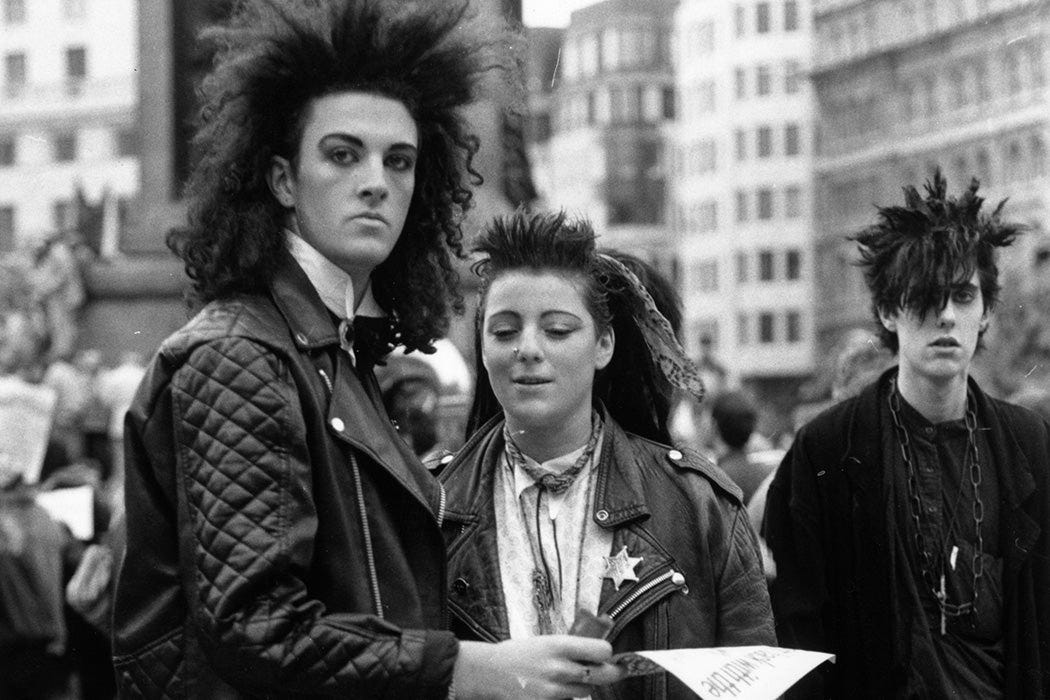
Bravo, Sir!
That was an utterly magnificent piece.
I've been writing about this for some time, trying to lessen my own confusion. Heck, I can't even make proper sense of what "gender" is - and certainly the definitions of the word all rely on the existence of the natural sex binary.
You've really crystallised a few things for me with this piece.
Once again, simply magnificent.
"Stereotypically feminine-acting boys and stereotypically masculine-acting girls are perfectly normal, and it’s a common phase for such children to experience some degree of confusion or distress about the concept of sex as they grow up, because their first awareness of it comes via distinguishing behavioural patterns — stereotypes — between the sexes. The deeper meanings of male and female are a lesson that comes later. As these naturally stereotype-defying kids integrate into society, they face a challenging decision: to try to fit in, or to try to take pride in having maverick personality traits that might put them at odds with traditionalists."
Yes, it is hard for parents to have kids like that. It makes it infinitely worse that gender ideology has become part of the bullying they experience. When I was a kid, the swishes got a real hard time, but the tomboys got left alone. Today, it's _worse_: people won't just say the boy is gay, they'll say he isn't a boy at all. Try going through middle school with the jocks telling you you're a girl, and then going online and asking "am I really a girl" and getting groomed into transgenderism by the internet, your teachers, and your doctors. You bet they're angry if they escape the cult.